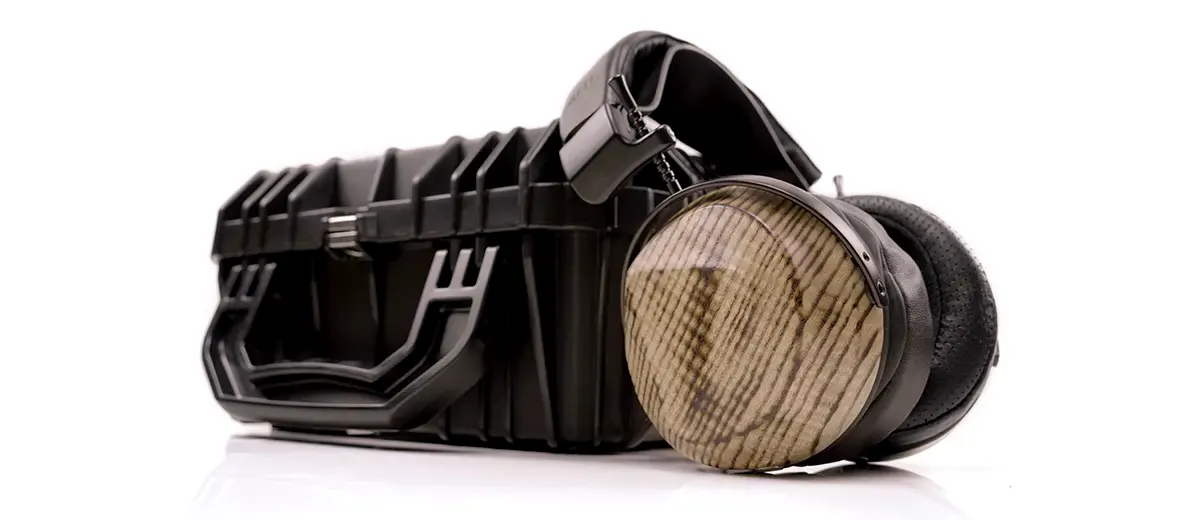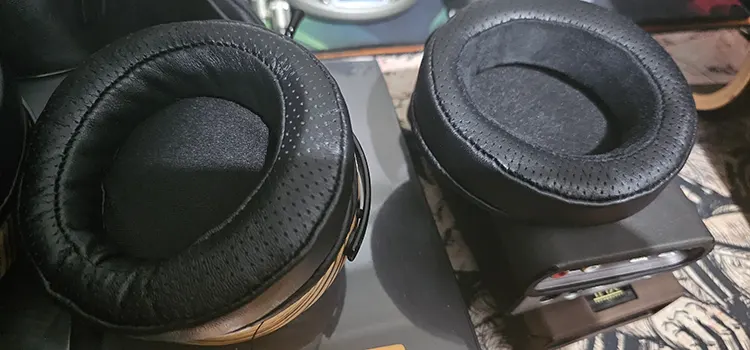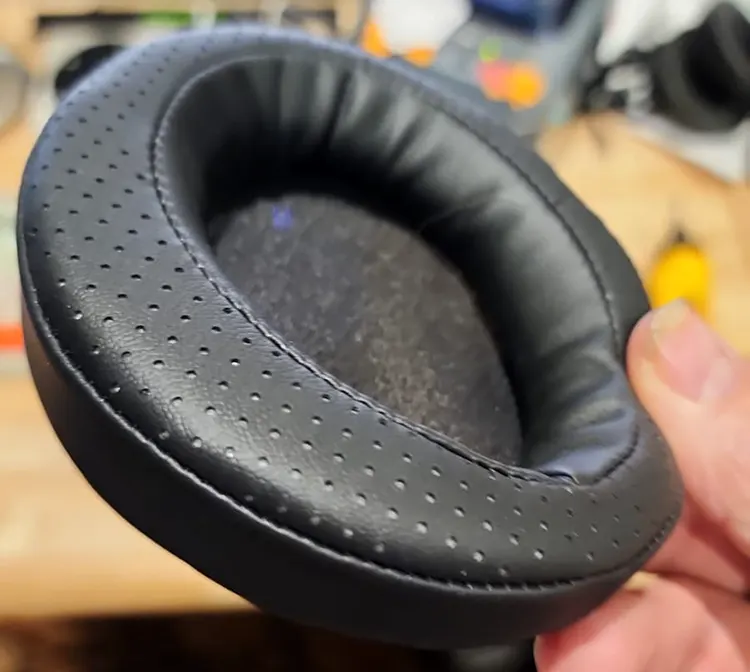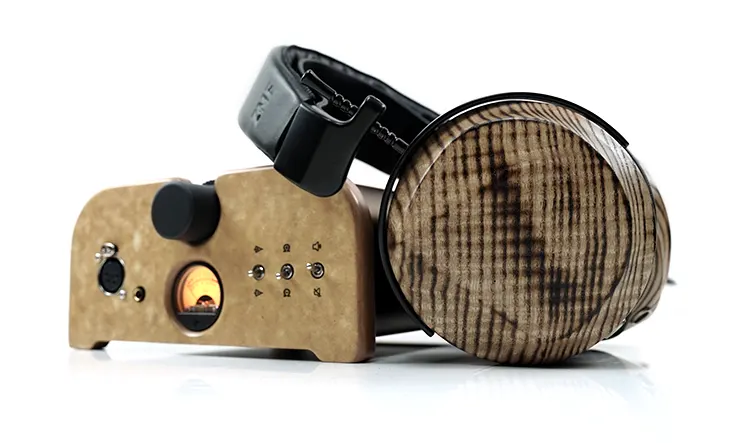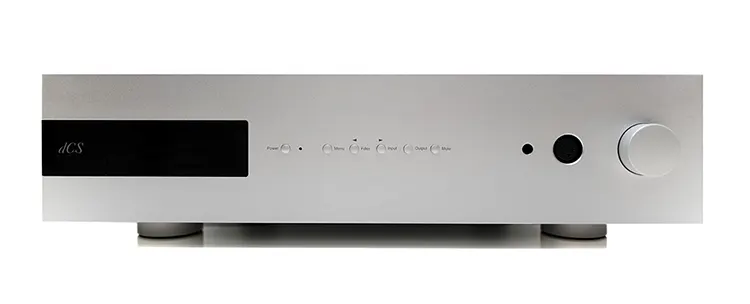Sound Impressions
The following sound impressions of the ZMF Headphones Caldera Closed were completed using a mix of the ZMF Headphones Homage and Feliks Audio Envy headphone amplifiers with the Shanling CA80 and the dCS Bartok Apex as the main DACs.
The Hybrid, Caldera Thick, and Protein pads combined with the stock red mesh were also used for these impressions with specific sections for each.
Preface
The ZMF Headphones Caldera Closed sound signature is a tale of 2 or possibly 3 pads depending on your budget and what they bring to the table in terms of tonal balance.
They range from exhilarating to relaxed and then something in between. Much of this might come down to personal preference but out of the three options I had before me I had one clear favorite, a close second, and then a distant third.
Yes, there are core qualities to its tuning that make it different from the open-back version of the Caldera regardless of pad but combining all the variations into one singular description is tantamount to editorial ‘parkour’.
So rather than try and squeeze these multiple sound signatures into one linear process I thought it would be wiser to add three distinct sections, one for each set of pads.
There would have been a fourth with the two mesh options but unfortunately, I only have the stock red mesh rather than the black mesh.
From what I am told, it lets in a bit more treble presence so worth investigating if you have an opportunity to do so as it is likely to amend even further what is already a fascinating blend of sound signatures from this flagship headphone.
Core Qualities
So, what are those core sound signature qualities of the Caldera Closed?
First, it sounds beautifully deep, and yes; it sounds beefier than the Caldera Open version with the pads either keeping it more to the tight side or opening up some glorious bloom and warmth depending on your preferences.
Second, there is some excellent presence throughout the mids with an addictive mixture of density and richness to rhythm guitar chords, the degree of which will be pad-specific.
Vocals have more of a neutral position compared to the open version, ranging from relaxed and rounded on the Hybrid pads to sweeter and more immediate on the protein pads and more neutral to natural but just as engaging on the thick pads.
Third, the highs of the Caldera Closed closely follow the open back with a minor bump around 7-8k and excellent extension up to 10k and beyond.
And finally, despite its closed-back design the Caldera Closed staging is pleasingly spacious and powerful, certainly one of the strongest high-end closed-back performances in this department.
There is far less of an abrupt ‘wall’ being hit when spatial cues and notes are released and dispersed into the background.
Though not quite as wide or holographic sounding as the open version it does have the edge in power and perceived depth with an even stronger bass fundamental which is crazy considering how much I love the fundamental on the open version to begin with.
Caldera Thick Pads
Sometimes referred to as the “deep pads’, they are deeper than the other two pads I sampled in this review with an all-leather finish and perforations on the top.
Of the three this gave me the most immersive and exciting performance from the Caldera Closed presentation.
The FR with these pads has a deep and well-extended bass shelf from 20Hz up to 200Hz so but also one I would consider the closest of the three pads to the linear delivery of the open-back variant over the same range.
The other two pads offer a bit more punch or bloom over the mid-bass which changes the shape and bass presence more towards warmth or rounded solidity whereas this one keeps it tighter and pacier.
I also found these pads more forward and energetic in their delivery throughout the mids right into the lower treble from around 1k through to 6k.
Of the three reviewed, the Thick pads offer the most dynamic percussion and a stronger higher-pitching vocal presence. There is also more timbral contrast that helps define the notes, shortens the decay a little, and injects more bite than the Protein and Hybrid pads offer.
With the stronger energy through the upper mids compared to the other pads the perception of height and air seems stronger with these pads. This is an exciting and ‘driven’ tonal signature but also one that sounds very coherent.
I am not convinced you will get a bigger macro staging quality with the Caldera Closed using the Thick pads over the stock Hybrid. If anything, it feels more immediate and personal but I can connect better with vocals because of that shift.
Protein Slim Pads
These are not the default pads with the Caldera Closed but I highly recommend you demo them or if you are flush with cash grab them as another option.
These are also all-leather pads with a perforated top contact surface and a slimmer profile compared to the Thick pads. There are fewer but slightly larger perforation holes.
Of the three pads, they offer the densest and punchiest bass response and a sweeter more euphonic set of mids and highs. They also sound the most immediate in terms of soundstage positioning, courtesy of your ear being a little closer to the driver.
That means everything sounds ‘bigger’, bigger bass, more vibrant and fuller-sounding mids, and a nice sparkle in the highs but not quite as forward sounding in the 4-8k range as the Caldera Thick pads.
That’s a contributing factor in that sweeter sound with a slightly more relaxed and flowing midrange tone versus the more neutral and dynamic overtures from the Caldera Thick pads.
The Protein pads will also bring a bit more warmth and solidity on the lows. Of the three it is the strongest performer for bass weight and punch with around 2 dB more elevation from 20Hz up to 200hz.
The enhanced bass fundamental is probably the most noticeable difference when first moving from the Thick pads to the protein pads.
Combined with a little additional warmth and elevation through the vocal range this is the ideal pad for higher-pitching vocals, particularly tracks with brighter mixes.
It’s a little more colored sounding compared to the Thick Pads vocal timbre but the beautiful combination of rich texture and sweet overtones is more alluring, especially with my chosen setup, the Feliks Audio Envy.
Stock Hybrid Pads
If there is a least favorite of the three pads, it would be the Hybrid pads. These are a slim profile mix of leather outer and suede inner with a perforated leather top surface.
Of the three pads, these have the most relaxed set of mids, though still quite immediate to the ear given its slimmer profile pushing your ear closer to the driver.
Vocals lose a bit of forwardness relative to the Protein and Thick pads and are not as airy or with the same level of tonal contrast creating a slightly darker quality to the presentation.
This is ironic since the Hybrid pads have a stronger 6-8 lift compared to the other two pads. I suspect the relative lack of 1-6k amplitude means they are less likely to pick up any of those stronger upper-order harmonics.
Beyond and into the treble itself, higher pitching instruments have a bit more sparkle with the Hybrid pads.
The bass quality has a more liquid overtone compared to the Thick pads which I felt have a more linear response. It’s not as dense or elevated as the Protein pads which deliver outstanding weight. This is more of a fulsome but slightly laid-back presentation.
Combined with the slightly stronger sparkler in the 6-8k region the Hybrid pads have more of a V-shaped tonal quality to them compared to the other pads.
Synergy
Efficiency & Sensitivity
Since the ZMF Headphones Caldera Closed shares the same driver as the Caldera Open, its rating is close at 60Ω and 94-96 dB/mW SPL for the closed back and 96-97 dB for the open.
Like its open-back sibling, the Caldera Closed does not need a huge power to drive it properly. It is more efficient compared to the likes of the Dan Clark Audio Stealth and the Abyss Diana MR.
However, I did find the closed-back version just marginally quieter using its balanced stock cable on most amplifiers tested with it. Not so much that you would need to switch impedance levels or find a stronger amp, but just a small movement of the dial upwards to match volume levels.
Still, a decent amplifier with good voltage and current headroom will allow the Caldera Closed to run to its maximum potential but you do not have to go crazy on the budget.
For example, the $1299 ZMF Homage Class A/B balanced analog amplifier can deliver 2.2W into a 32Ω load or around 1.1W and 0.14A of current for the 60Ω rating of the Caldera Closed.
With a high gain, low impedance (0.7Ω) setting this pairing had bags of headroom sounding tight and dynamic with excellent clarity when paired with the balanced line-out of the HiBy R8 II.
The pairing that simply did not work at all regardless of power was the Cayin HA-300MK2. It has plenty of power to drive the Caldera Closed and with previous ZMF Headphones such as the open versions and the Atrium, it was a superb, holographic-sounding pairing.
However, with the Caldera Closed it sounded muddy with overblown lower-mids bloom and attenuated highs giving the mids too much prominence and warmth. I can only assume a resistance mismatch somewhere in the chain, so I recommend avoiding tube amps with high-impedance outputs.
Desktop Pairings
I tested 5 amplifiers and several sources with the Caldera Closed and walked away with a few headline conclusions about the ideal pairings.
First, it loves a high level of dynamic range and a solid low bass floor with a black background. And second, the more resolving the performance the more immersive the Caldera Closed will become.
Width & Depth
The Caldera Closed has a few levels in its bag it can go to for staging, particularly in terms of width and depth. The better the amp is in for sub-bass extension and the more articulate it can deliver on the staging X-Axis the more open and immersive the Caldera Closed will sound.
For example, Cock Robin’s World Apart from the 1989 First Love/Last Rites album has a long atmospheric lull or interlude around 3:15 minutes into the song with instruments and vocals wandering around the extreme ends of the X-Axis.
Layered underneath is a mild continuous sub-bass synth tone combined with a meandering bass guitar riff to add depth and substance to the melody.
Each tested amplifier did something a little different with that interlude that served to determine what pairing was my personal preference.
Homage & Full Score One
Between the Homage and the Austrian Audio Full Score One, I preferred the Full Score One for its X Axis performance and height. It sounded more confident and teased out a stronger tone on the very extremes of the soundstage.
However, the Homage did better with sub-bass and vocal presence giving it some additional depth though not quite the same treble presence as the Full Score one so, it never sounded quite as wide with this pairing for those pan and scan note movements during the interlude.
dCS Lina & Bartok Apex
Taking that same interlude to the high-end amplifiers, the dCS Lina Headphone Amplifier sounded faster and more accurate than either of the lower-end amps but perhaps too neutral in its tone and not enough warmth on the lows to fatten up some lower-pitching instrumental notes.
This pairing has no shortage of dynamic range but the focus is more on beautiful clarity and detail with brilliant left-right imaging.
The Bartok Apex did much better on depth but like the Homage it’s slightly more relaxed in the highs. Perhaps the most natural sounding of the pairings but I would want more presence in the treble to tease out improved awareness of the track’s interlude notes at the extreme ends of the stage from the Caldera Closed.
Feliks Envy
That is where the Feliks Envy with the Bartok Apex as the DAC suited the Caldera Closed perfectly.
It offered the best depth and the most physicality in its note impact, not just in the bass but right through the mids and the highs with more than acceptable levels of detail from the world-class Bartok Apex DAC.
This is a more natural to neutral pairing and not as resolving as the dCS Lina but I think that suits the Caldera perfectly. Anything too soft, languid, or neutral and reference will not do it justice.
You need to maximize the width and depth of these headphones but keep the tone relatively smooth to get the best out of them.

